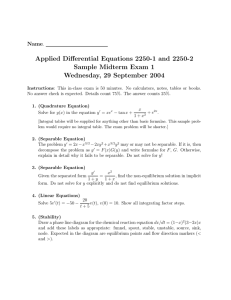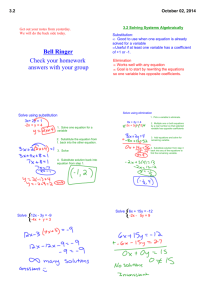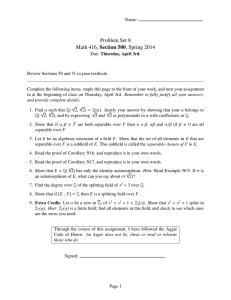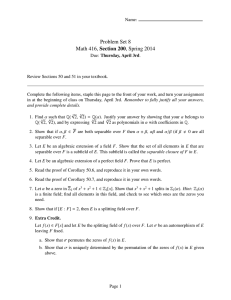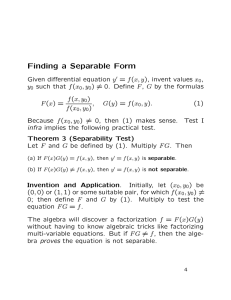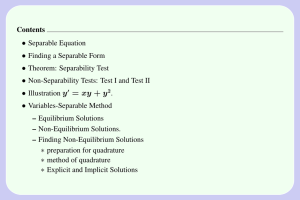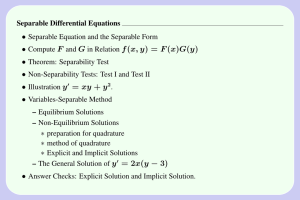Exam 1 Review
advertisement
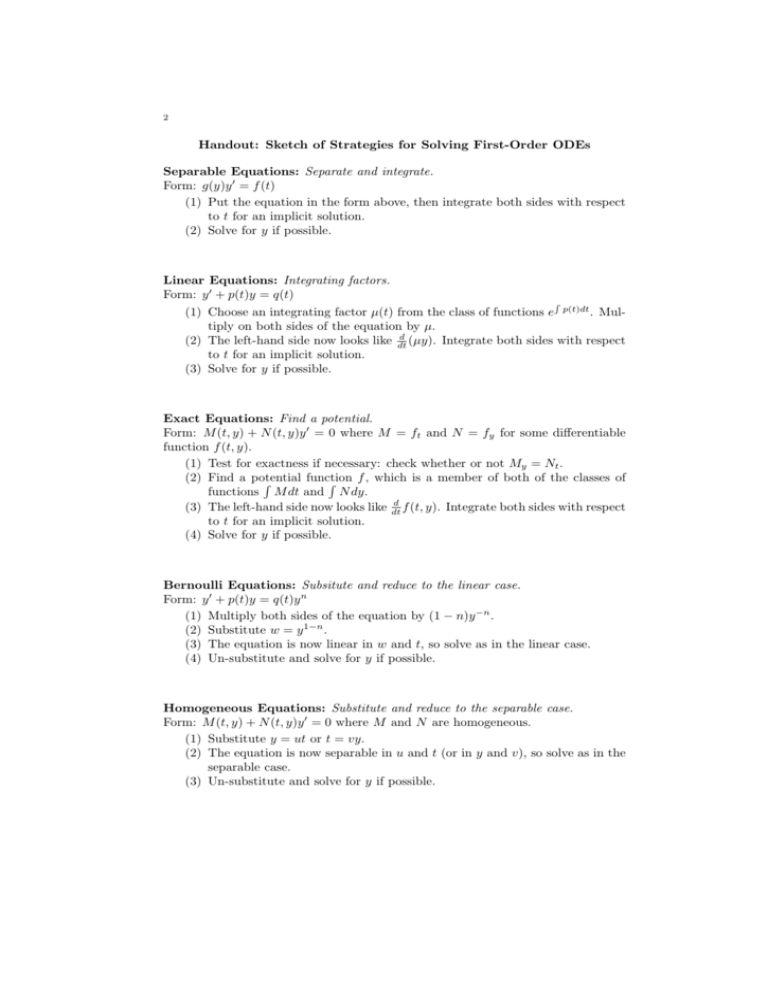
2 Handout: Sketch of Strategies for Solving First-Order ODEs Separable Equations: Separate and integrate. Form: g(y)y 0 = f (t) (1) Put the equation in the form above, then integrate both sides with respect to t for an implicit solution. (2) Solve for y if possible. Linear Equations: Integrating factors. Form: y 0 + p(t)y = q(t) R (1) Choose an integrating factor µ(t) from the class of functions e p(t)dt . Multiply on both sides of the equation by µ. d (µy). Integrate both sides with respect (2) The left-hand side now looks like dt to t for an implicit solution. (3) Solve for y if possible. Exact Equations: Find a potential. Form: M (t, y) + N (t, y)y 0 = 0 where M = ft and N = fy for some differentiable function f (t, y). (1) Test for exactness if necessary: check whether or not My = Nt . (2) Find a potential function f , which is a member of both of the classes of R R functions M dt and N dy. d (3) The left-hand side now looks like dt f (t, y). Integrate both sides with respect to t for an implicit solution. (4) Solve for y if possible. Bernoulli Equations: Subsitute and reduce to the linear case. Form: y 0 + p(t)y = q(t)y n (1) Multiply both sides of the equation by (1 − n)y −n . (2) Substitute w = y 1−n . (3) The equation is now linear in w and t, so solve as in the linear case. (4) Un-substitute and solve for y if possible. Homogeneous Equations: Substitute and reduce to the separable case. Form: M (t, y) + N (t, y)y 0 = 0 where M and N are homogeneous. (1) Substitute y = ut or t = vy. (2) The equation is now separable in u and t (or in y and v), so solve as in the separable case. (3) Un-substitute and solve for y if possible.
